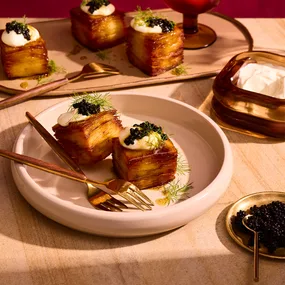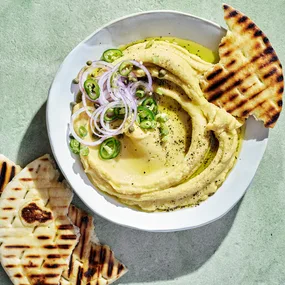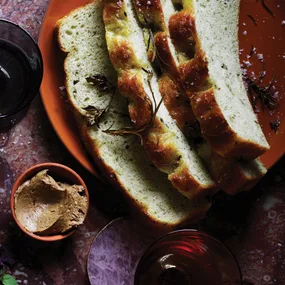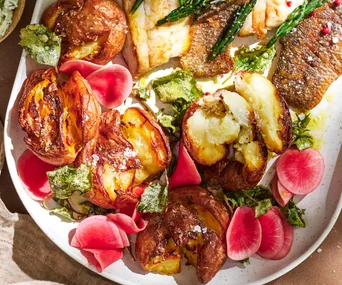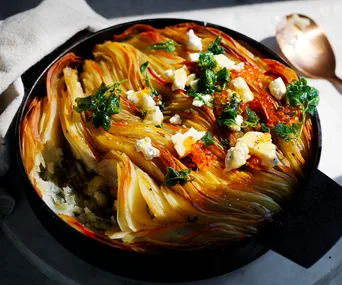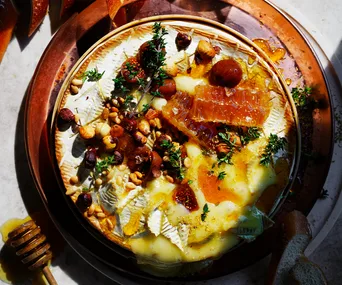Cooking with artichokes isn’t as daunting as their prickly appearance might suggest – these delicious treasures are highly prized and easily prepared.
Underneath their tough exterior, artichokes possess a surprisingly tender heart. Their tough, fibrous leaves may put off many cooks, but it’s quite simple to free the heart from underneath its armour by removing the thick outer layer as well as the fibrous matter (the choke) that sits at the base.
The edible part of the artichoke is in fact the flower bud, which, when left unharvested, blooms into a stunning purple display. As artichokes are members of the thistle family, this is also when they become inedible. Picked before this point though, the bulb is a highly-anticipated seasonal gift – the ugly duckling of the vegetable world, and with a bit of easy preparation you’ll be handsomely rewarded.
Artichokes get their pleasant, bitter taste from the organic acid cynarin, found in the green parts of the plant. This acid, however, is also the culprit for making artichokes a difficult wine match, as it sweetens the flavour of any accompaniments. The same acid is also responsible for stimulating the liver and lowering cholesterol.
It is Italian cooks who truly do an artichoke most justice, serving it braised, stuffed, deep-fried, shaved and tossed in salads. When picked very young, before the choke develops, they are served whole in a Tuscan appetiser of raw vegetables dipped in olive oil called pinzimonio. In Rome’s Jewish quarter, cooks open out the leaves of the artichokes, remove the choke, fry it whole in hot oil until it is deep golden in colour and serve it sprinkled with sea salt.
The first time you prepare an artichoke, the amount of waste might be disconcerting. True aficionados, however, would boil the vegetable whole, consuming it one leaf at a time by dipping the fleshy base of each into hot butter, vinaigrette or hollandaise sauce and scraping out the goodness between their teeth.
For the rest of us, the best way to deal with an artichoke is to start with a firm, fresh specimen. You should choose one that is plump and heavy with tightly closed leaves and a hard stem. According to Stephanie Alexander in The Cook’s Companion, when the outer leaves are removed from the artichoke there should be a definite squeak, indicating its freshness.
When working with artichokes, you should have acidulated water or verjuice on hand, as they discolour quickly when exposed to air. (It is also important to wipe your knife clean after preparing them as they discolour stainless steel.) The following recipe is a standard preparation of artichokes that can be refrigerated and served on antipasto platters, pasta, on pizza or in a salad.
Artichokes go with anchovies, asparagus, broad beans, eggs, garlic, peas, goat’s cheese, lemons, prosciutto, parmesan, thyme, veal.
Ingredients
Method
Main
Short order recipe: Artichoke, broad bean and goat’s cheese salad
Bring a large saucepan of salted water to the boil over high heat, add 600gm of shelled broad beans and simmer for 3 minutes or until tender. Drain and refresh under cold running water. Preheat oven to 180C. Brush 2 pieces of Lebanese bread with olive oil, place on an oven tray and bake for 8 minutes or until golden and crisp. Coarsely tear 1 cup of mint leaves and combine with braised artichokes, 1 small red onion shaved on a mandolin and braod beans. Arrange on plates, scatter with soft goat’s cheese and drizzle with 125ml (½ cup) of extra-virgin olive oil. Take 1 tsp of coarsely cracked black peppercorns and scatter over the saled. Serve with coarsely broken Lebanese bread.
Notes



